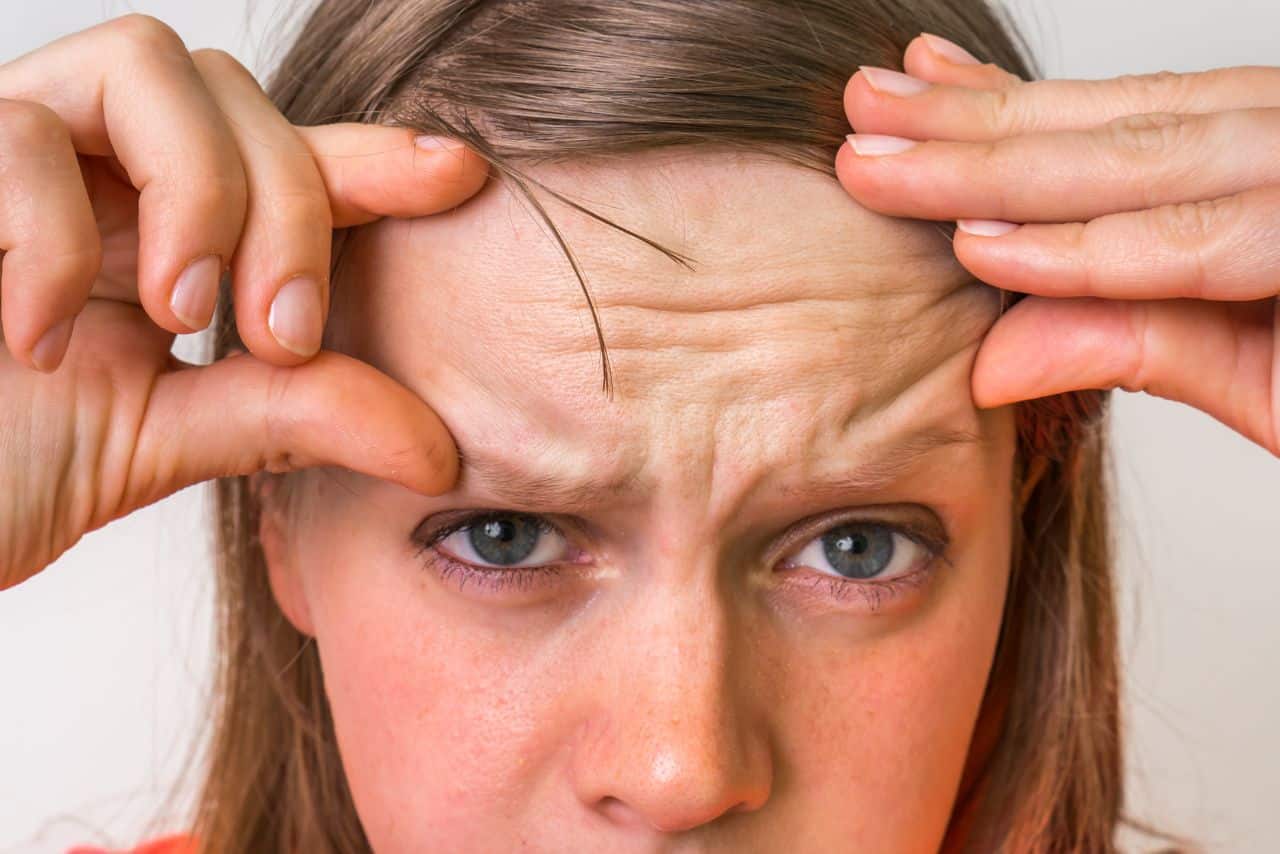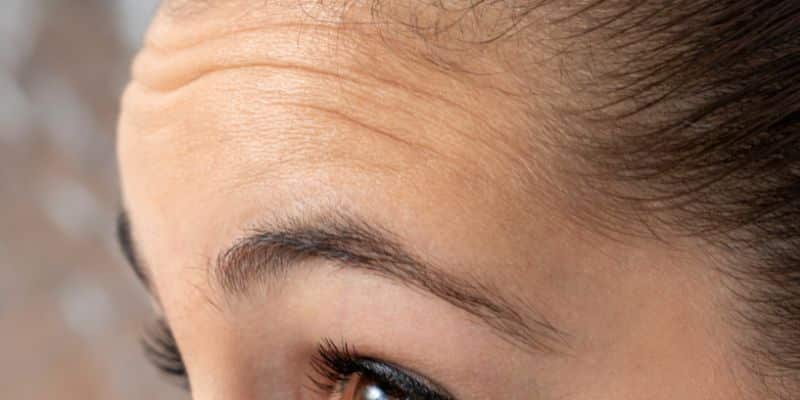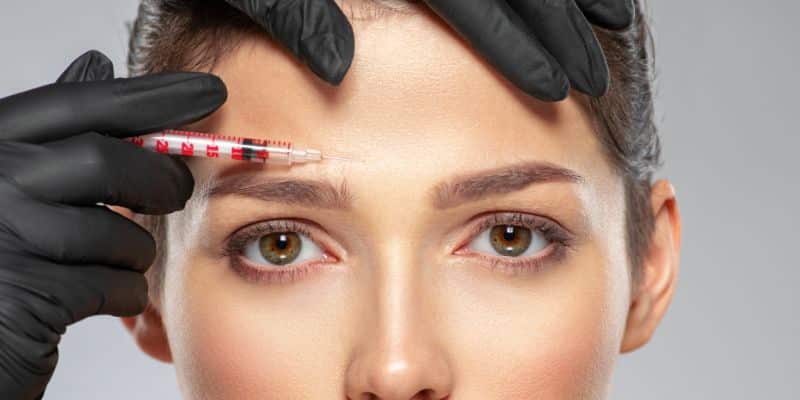
Forehead wrinkles, often perceived as an unwelcome sign of aging, can significantly affect individuals’ self-perception and confidence. A notable solution to this concern lies in the administration of dermal fillers – and they are growing in popularity.
These injectable substances offer a promising alternative to more invasive procedures, allowing medical professionals to address forehead wrinkles effectively without requiring surgery. The popularity of dermal fillers has seen a consistent rise, primarily due to their ability to restore a youthful appearance with minimal downtime. However, the application and management of these substances require an in-depth understanding of facial anatomy, precise techniques, and comprehensive knowledge about their composition and potential risks.
This article explores the use of dermal fillers in treating forehead wrinkles, discussing their efficacy, procedural details, potential risks, and post-procedure care. The content presented here intends to equip readers with a comprehensive understanding of this non-surgical intervention and its application in modern aesthetic practice.
What Are Dermal Fillers?
Dermal fillers are a group of non-surgical cosmetic treatments used to bring about a more youthful appearance by restoring volume or filling in lines and wrinkles on the face. These injectable substances have become a popular choice in aesthetic medicine due to their relative safety, affordability, and the minimally invasive nature of treatment.
Composed primarily of substances that are naturally found in the body, dermal fillers are designed to work with the body’s existing biology. The primary ingredient in many fillers is hyaluronic acid, a naturally occurring sugar chain molecule that attracts and binds water in the skin, helping to maintain firmness and plumpness. Other filler types include poly-L-lactic acid, a biodegradable synthetic substance, and calcium hydroxylapatite, a mineral-like compound, both of which stimulate collagen production to restore skin structure and volume.
Dermal fillers differ not only in their composition but also in their consistency and longevity. Some are quite fluid, offering subtle corrections and being suitable for areas like fine lines and under-eye concerns. Others have a thicker consistency, providing more substantial volume and structure, ideal for deeper wrinkles and areas of significant volume loss. The choice of filler type will depend on the treatment area, the patient’s individual needs, and the desired outcome.
Understanding the mechanism of action of these fillers is key to achieving successful results. When injected into the dermis, the targeted skin’s deeper layer, these fillers work in two significant ways. First, they add immediate volume beneath the skin surface, pushing up the overlying skin and smoothing out wrinkles. Second, by attracting water molecules, hyaluronic acid-based fillers help hydrate the skin, enhancing its quality and texture.
Over time, some filler types encourage the skin to produce more of its collagen, a critical protein responsible for the skin’s structural integrity and firmness. This collagen stimulation not only contributes to the immediate visible effects post-treatment but also promotes healthier, more youthful skin in the long run. However, it’s important to note that this collagen-stimulating effect varies with the filler type and is not a characteristic of all fillers.
It’s crucial to be aware that while these fillers provide a quick and noticeable change in appearance, their effects are not permanent. Depending on the filler type, the body’s metabolism, and the area treated, results can last anywhere from six months to two years, requiring repeat treatments to maintain the desired effect.
Given the diverse range of available dermal fillers and their different characteristics, selecting the right filler for each patient requires careful consideration. A thorough understanding of the patient’s skin condition, medical history, and aesthetic goals, coupled with a detailed knowledge of the filler properties, ensures a personalized approach to treatment. This understanding allows medical professionals to make the most suitable choice to address forehead wrinkles and other aesthetic concerns, bringing about natural, pleasing results while prioritizing patient safety.
Using Dermal Fillers on Forehead Wrinkles
The forehead, an expansive and highly mobile area of the face, is a frequent focal point for those seeking to rejuvenate their appearance. Wrinkles and lines that form on the forehead can be due to various factors, including aging, muscle activity, and exposure to environmental stressors such as sunlight. These lines, whether they’re the horizontal lines that traverse the forehead or the vertical ’11’ lines that can form between the eyebrows, often contribute significantly to perceived age.
Addressing these lines and achieving a smoother forehead is a common request in aesthetic medicine. This section will delve into the efficacy of dermal fillers as a non-surgical method to mitigate these lines and provide a more youthful appearance.
Dermal fillers are gaining increasing recognition for their ability to restore volume and smooth out wrinkle lines. The action of dermal fillers is twofold: they not only smooth out wrinkles and lines by directly adding volume but also stimulate the skin to produce collagen, further enhancing skin structure and resilience. This makes dermal fillers an effective option for forehead wrinkles.
Several clinical studies have highlighted the effectiveness of dermal fillers in treating forehead wrinkles. For instance, a study published in Dermatologic Surgery in 2022 demonstrated significant improvement in the severity of forehead lines following treatment with HA fillers. Another study in the Journal of Aesthetic Plastic Surgery in 2023 found that most patients experienced satisfaction with the results of dermal filler treatment for forehead wrinkles, and these results lasted up to 12 months.
One significant advantage of dermal fillers is their immediacy; patients often notice results almost immediately after treatment. Furthermore, the effects of dermal fillers can be relatively long-lasting. While the exact duration can vary based on individual factors and the specific type of filler used, many patients can expect the smoothing effects to last up to a year.
Nonetheless, the number and frequency of treatments required will depend on the severity of the wrinkles, the patient’s skin type, and the type of dermal filler used. It’s important to remember that while dermal fillers offer significant improvements, they do not halt the aging process; regular maintenance treatments are typically needed to sustain the effects.
In addition to their effectiveness, dermal fillers are highly customizable. The amount and type of filler used can be adjusted to meet each patient’s individual needs and aesthetic goals. This makes them a versatile tool in aesthetic medicine.
The patient’s comfort during the procedure is another significant consideration. Many dermal fillers contain lidocaine, a local anesthetic, which enhances patient comfort during the injection. Moreover, advanced injection techniques, such as the use of cannulas instead of needles, can further minimize discomfort.
Procedure of Applying Dermal Fillers on Forehead
In the field of aesthetic medicine, applying dermal fillers to the forehead necessitates a blend of meticulous technique, an understanding of facial anatomy, and the use of quality products. It’s important to approach this process with the goal of not only minimizing wrinkles but also maintaining the overall balance and symmetry of the face. Here is an overview of the process:
1. Patient Consultation and Evaluation
An effective treatment begins with a comprehensive consultation. Assess the patient’s medical history, current health status, and any previous treatments they’ve undergone. Discussion of the patient’s aesthetic goals is essential. Understanding their expectations helps in devising a treatment plan that best suits their needs.
A detailed examination of the forehead’s skin quality and the depth and position of wrinkles should follow. The position of the frontal branch of the facial nerve, which is generally located within the temporofascial plane, should be noted as well. This will help reduce the risk of inadvertent nerve injury during the procedure.
2. Preparation and Marking
Before administering the dermal filler, cleanse the treatment area thoroughly using a suitable antiseptic solution. Mapping and marking the injection points on the forehead is a recommended practice. Strategic placement of the filler not only aids in wrinkle reduction but also helps to achieve a natural, harmonious appearance.
3. Application of the Dermal Filler
The method of injecting the dermal filler depends largely on the type of filler used and the individual patient’s needs. However, a commonly used technique is the serial puncture technique, where multiple injections are given along the length of the wrinkle or fold.
For forehead lines, the injection should be made into the mid-to-deep dermis using a thin needle. Injections too superficial may lead to the Tyndall effect, causing a bluish discoloration of the skin. Too deep, and the filler may not achieve the desired effect. An experienced hand can feel the resistance as the needle passes through the different layers of the skin.
4. Massaging the Area
Once the filler has been injected, it’s often beneficial to gently massage the treated area. This helps to evenly distribute the filler, smooth out any lumps, and further shape the contour of the forehead. However, be mindful of the pressure applied as aggressive manipulation could lead to unwanted dispersion of the filler.
5. Review and Finishing
Inspect the treated area for any immediate complications like bleeding or blanching of the skin, and address them promptly. Also, review the results from different angles to ensure a smooth and natural appearance. Any unevenness or dissatisfaction from the patient may require additional filler injections or adjustment of the existing filler.
While the procedure itself is relatively straightforward, proficiency in injecting dermal fillers demands both knowledge and experience. Always bear in mind the ultimate goal: to provide patients with a safe, effective treatment that enhances their natural beauty and boosts their confidence. It’s not just about filling lines; it’s about creating a harmonious, balanced appearance that respects the individual’s unique features and facial dynamics – rather than attempting to emulate a specific look seen on social media without regard for the patient’s unique facial qualities.
Possible Risks and Side Effects
Forehead wrinkles can be effectively treated with dermal fillers, but as with any medical procedure, there are potential risks and side effects to consider. In this section, we’ll delve into these potential concerns, which is of great importance for anyone providing this service, to ensure the best outcomes for patients and uphold the highest standard of care.
Most commonly observed are transient and typically mild side effects such as swelling, redness, and tenderness at the injection site. These are usually self-limiting and resolve within a few days. Informing patients about these expected reactions ahead of time can help manage their anxiety and foster a sense of trust.
However, more serious side effects can occur. For instance, inappropriate injection technique or filler placement can lead to lumps or uneven texture. Understanding facial anatomy and proper injection techniques is critical to avoid these outcomes. In some cases, an enzyme called hyaluronidase may be used to dissolve hyaluronic acid-based fillers if complications occur.
A rarer but more serious concern is vascular occlusion, where the filler is accidentally injected into a blood vessel. This can cause pain, blanching, or in worst-case scenarios, necrosis of the tissue or blindness. These risks underline the importance of using a cannula instead of a needle wherever possible, aspirating before injecting, and injecting slowly with low pressure.
Another significant consideration is the possibility of allergic reactions or hypersensitivity to the filler components. Although uncommon, such reactions could range from mild irritation to severe systemic responses. Patients should be assessed for allergies during the consultation, and doctors should be prepared to manage such reactions if they occur.
Aftercare and Follow-up
A critical component of any successful treatment regimen involves not only the execution of the procedure itself but also the necessary steps to ensure the patient experiences optimal results and minimal discomfort post-treatment. This section delves into the essential aftercare instructions and follow-up routines following the application of dermal fillers to treat forehead wrinkles.
Upon completing a dermal filler procedure, patients should receive clear, written aftercare instructions to help manage any immediate side effects and promote healing. It’s common for patients to experience mild swelling, redness, or bruising at the injection sites, which usually subsides within a few days. Cold compresses can be recommended to manage these symptoms.
Patients should be advised to avoid strenuous exercise, alcohol, and exposure to extensive heat or sun for at least 24 hours post-treatment. These precautions can help prevent increased swelling or discomfort. Additionally, instruct patients to maintain good hydration and avoid massaging the treated area to prevent the filler from dispersing unevenly.
Moreover, skincare regimen guidance should also be a part of the aftercare instructions. Recommend using gentle, non-irritating products for the first few days post-procedure. A suitable skincare regimen can maintain the health of the skin and prolong the effects of dermal fillers.
Scheduling a follow-up appointment is crucial to assess the results of the treatment and plan for any necessary future procedures. Typically, a follow-up appointment within two weeks post-procedure allows adequate time for any immediate swelling to subside and the filler to settle. During these appointments, patient satisfaction should be evaluated, and any concerns addressed. If necessary, touch-ups can be performed to refine the results.
Moreover, long-term follow-up plans should also be discussed. The longevity of the dermal filler’s effects depends on the type of filler used, the area treated, and individual patient factors. However, typically, dermal fillers for forehead wrinkles require maintenance treatments every 6 to 18 months. Regular follow-ups can help maintain the desired aesthetic results while ensuring patient safety.
A proactive and comprehensive approach to aftercare and follow-up can enhance the overall patient experience. It fosters trust, satisfaction, and encourages a longer-term professional relationship with patients. By ensuring optimal aftercare and thorough follow-up routines, the successful application of dermal fillers for forehead wrinkles is more than just a procedure – it’s a holistic process that guarantees the best outcomes for patients.
Conclusion
In conclusion, the value of skilled application and an in-depth understanding of dermal fillers cannot be overstated in the context of forehead wrinkle treatment. Expertise in this area of aesthetic medicine enhances the potential for optimal patient outcomes, while minimizing risks. Given the distinct and delicate anatomy of the forehead, the practitioner’s meticulous approach towards the selection, placement, and injection of the right type of dermal filler is paramount.
The pursuit of continued education and training in the evolving field of dermal fillers is crucial to stay ahead and provide the best care possible. Technological advancements, changes in filler composition, and newly conducted clinical trials often bring forth invaluable insights that can augment the effectiveness of treatments, improve patient satisfaction, and decrease side effects.
Finally, it’s important to recognize the inherent trust patients place in medical practitioners when seeking aesthetic improvements. This trust underscores the responsibility to ensure the safe and effective use of dermal fillers, making informed decisions based on the latest evidence and professional experience.

About the Author: Doris Dickson is a specialist writer for Health Supplies Plus, focusing on the aesthetic medicine industry. She diligently researches cosmetic treatments and products to provide clear, concise information relevant to licensed medical professionals. Her work supports Health Supplies Plus’s commitment to being a reliable informational resource and trusted supplier for the aesthetic community.
Disclaimer: The content provided in this article is intended for informational purposes only and is directed towards licensed medical professionals. It is not intended to be a substitute for professional medical advice, diagnosis, or treatment, nor does it constitute an endorsement of any specific product or technique. Practitioners must rely on their own professional judgment, clinical experience, and knowledge of patient needs, and should always consult the full product prescribing information and relevant clinical guidelines before use. Health Supplies Plus does not provide medical advice.


